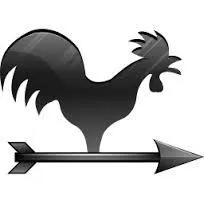UNAI
01/22/2018 10:09 a.m.
Hello!
In the other post I already told my story.My girlfriend is diabetic.
A year or girlfriend a year ago while sleeping he had a very serious decrease in sugar.It had 29 sugar.
I woke up from a scare because I saw her convulsing, with her eyes white and without reacting.
Now so that something like this does not happen again, before bedtime sugar is measured.
But my question is, how much sugar would I have to have before sleep so that no night hypoglycemia does not suffer?100?90?150?
I would like to know approximately how much it would be advisable.
If you lie with more than 100 for example, is it almost impossible for you to suffer a strong sugar drop while sleeping?
I want what happened that night happened again.I still have nightmares with that.
And another thing, how can it have 200 of sugar at par of hours to 70?Is it normal?
Thank you!!
No signature configured, add it on your user's profile.
There is no answer for all cases because it is something that depends on many things.The night drops usually depend on how tight the basal insulin (the slow one) has.If being at rest and without eating anything when there is no already fast insulin influence (rapid insulin usually acts for 4 or 5 hours although normally from 3 hours the effect is minimal) the glucose remains constant, it is that it has itwell adjusted and if you go to sleep with 100 you will get up in a similar figure.But if you are getting slower than your body needs at night.For example, I have it well tight and I can go to sleep in 90 or 100 and I know that at most it lowers me 10 or 20 so I will not have hypoglycemia.That if about 3 or 4 hours have passed since I got the quick of dinner.If I go to bed at 2 hours of dinner I could give me a downturn for the fast if I have not calculated the dose well for what I have had dinner.But each person is different and has to see his specific case herself.
We must also bear in mind that in the case of women the hormonal cycle varies the needs of insulin and a few days we need more than others and not all affect us in the same way.From ovulation to the rule I need more slow insulin and during and after the rule less.But it is my specific case, it is not applicable to everyone.
And as for having 200 at 2 o'clock, it is in 70 depends on the amount of fast insulin that has been put or the exercise you do, etc.
You have to keep in mind that this is a very complicated disease in which a lot of variables that we cannot control influence.What your girlfriend should do is get frequent controls (before and after all meals and before going to sleep) and point everything.With that you can see if you need to make insulin adjustments and if you do not know that you take them to the endocrine and adjust it and explain how to do it.It is impossible to carry good control without controlling and without knowing how to adjust insulin and counting the hydrates of what he eats.If you don't know how to do any of these things you speak with your doctor and appoint you with the educator to teach her.
And if you can afford it, the continuous glucose meters such as Freestyle or Dexcom are very good.They leave expensive but you can know at all times how your glucose is without giving you punctures and in the case of Dexcom you have the option to configure alarms to let you know if you lower or go up the values that you put.You also see the graphs of the whole day and you know if you need to make adjustments in insulin.If you are looking in the forum, there are threads about both where you can read how they work.Freestyle leaves for € 120 per month and Dexcom depends on how much you extend the sensors.
DM1 desde 2003 | Toujeo + Humalog | FreeStyle 2 | HbA1c 5.5
If slow insulin is put in the morning, the risk of night hypos is usually quite lower.Yes it is measured before sleeping and juice is taken to not fall asleep with less than 130, you should not wake up low.
Hija de 35 años , diabética desde los 5. Glico: normalmente de 6 , pero 6,7 la última ( 6,2 marcaba el Free)
Fiasp: 4- 4- 3 Toujeo: 20
UNAI
01/22/2018 7:23 p.m.
Thank you.The truth is that this topic has very worried.I had a very bad time
No signature configured, add it on your user's profile.
UNAI
01/22/2018 7:30 p.m.
How is that of Dexcom?Work well?
No signature configured, add it on your user's profile.
@"Unai"
The Dexcom is a system consisting of a sensor that measures glucose in the interstitial fluid every 5 minutes and sends it to a receiver, which can be the same mobile phone, with what you have the data of your glycemia in real time.It is a very good measurement system, and of course it works well.You must calibrate the sensor with the hair value every 12 hours maximum and the transmitter, a small device that goes on the sensor, changes every 3 months (corrected me if I'm wrong).The sensors last 7 days (although most people stretch them) and the price (quite high) is their main problem.You have other more cheaper systems such as Guardian Connect and Abott's free freestyle, which you can also consider (very good) options.
What you ask what is perfect glycemia to bed, I think the same thing they have already told you: there is no answer.With an adjusted basal, you could go to bed with 100 and spend the flat night without hypoglycemia but as you are slower than you need you can bed with 200 and have a hypoglycemia in the middle of the night.Therefore, these systems can help you the first to adjust your basal dose (why you will see a graph with what your glucose does during the day and night), and you can go up or lowering units watching the photograph of the evolution of the evolution ofYour glucose and the patterns that follow.When you have adjusted your basal pattern, you will see how you significantly reduce the risk of hypoglycemia (and with it that fear you have, which is normal);In any case, I would tell you that we must always lie with a glycemia greater than 120, for security and sleep quietly.It makes no sense to spend the night in 90 since it does not contribute any long -term benefit and only increases the risk of nocturnal hypoglycemia, quite dangerous.
30 años. Diabetes tipo 1 desde los 10
Medtronic Minimed 640g
NovoRapid
hA1c: 6%
Sensor Enlite
UNAI
01/24/2018 9:01 a.m.
Is there any risk or danger to walk with 200 and 250 sugar many hours of the day?
No signature configured, add it on your user's profile.
@Unai: Yes, there is a risk and is called "long -term complications."But they usually appear after 35..50 years of evolution (time from diagnosis) and not always, because there are many factors that we cannot control.
No signature configured, add it on your user's profile.
JPR
01/24/2018 11:09 a.m.
unai said:
There is some risk or danger to walk with 200 and 250 sugar many hours of the day?
A fundamental part for diabetes treatment to be optimal is to correct hyperglycemia.Whenever you have high glucose figures ponte insulin and run.As they just told you, in the long term of course they spend high values.
One thing is that you are with 170 for a while, but with 250 you have to correct as soon as you see it ...
30 años. Diabetes tipo 1 desde los 10
Medtronic Minimed 640g
NovoRapid
hA1c: 6%
Sensor Enlite
As constant hyperglycemia tell you, they can cause long -term problems.Depending on the person they may or may not appear and appear before or later.
Problems include:
Loss of vision or blindness
Damage or renal failure
Pain and nerve damage
Heart disease and blood vessels
High blood pressure
Dental problems
Hand problems
Foot problems
It is important not to stay high for a long time and correct quickly whenever a value is seen above 200 or even less.I correct with 150. The more time the more damage is produced in the body and the more likely one of the previous complications appears.If you are looking for Google you can find much more information about all of them.
DM1 desde 2003 | Toujeo + Humalog | FreeStyle 2 | HbA1c 5.5




